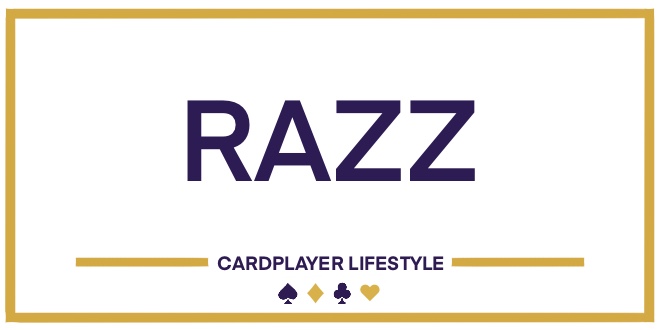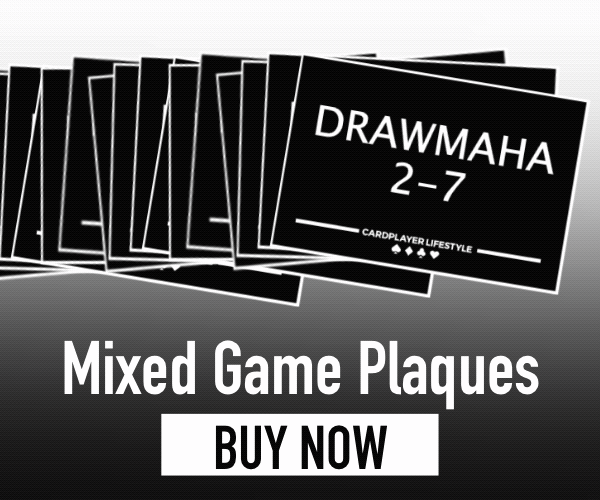Is there a “perfect” selection of games for a mixed game? With every player preferring certain games and game types, and some short-sighted Debbie Downer players claiming that “carnival” games aren’t real poker (hold ‘em was once a “carnival” game to “real” draw poker players), any claim to a “perfect” mix might be tenuous, at best, and hubris, at worst. But saying “most robust, best game variety for most players” is just too damn many words for a headline we want you to click.
Why even suggest a mix? Aren’t most game dealer’s choice? Well, some games are dealer’s choice, but many games also have – or at least start with – a set mix. Certainly the game in which I got my mixed game feet wet, the All Vegas Poker 10-game mix Sunday evenings at Imperial Palace, was. And the biggest issue with a dealer’s choice game is that the game can become heavy with one game or game type and be less of a true, good mix of games.
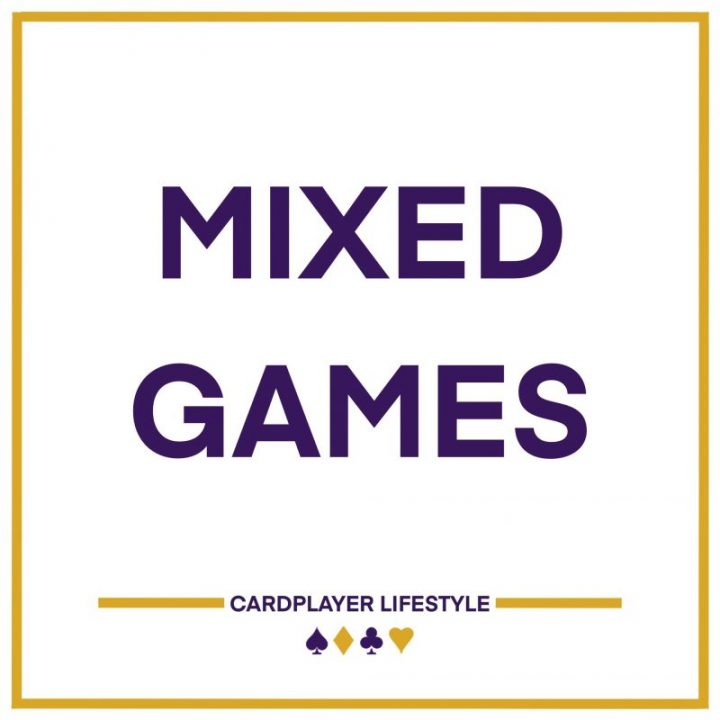
What do I mean by game types? Well, there are the following primary game types in today’s typical mixed poker game:
- Flop games
- Stud games
- Draw games
- Drawmaha games
In addition, games within each type can be single pot or split pot.
The perfect mix contains a good variety of all of these.
The All Vegas Poker Mix
There used to be a really good, informative poker website called All Vegas Poker. It provided lots of useful information about Las Vegas poker rooms and over time, a bit of an AVP community grew. A few folks from the site would occasionally go out on group poker sprees and report on the fun had, and at one point, someone had an idea to try and create a regular mixed game.
That game ran for years at the old Imperial Palace (IP) at 7pm every Sunday. It was a $3/$6 game and had a 10-game standard rotation. I found out about it by being on AVP, and being the curious type, I arranged a trip to Vegas one time to play in that game.
I had a blast.
One of the really, really great things about low-limit mixed games is that they are a great–and (relatively) inexpensive–way to learn the games being played (just like Cardplayer Lifestyle’s Mixed Game Festival). To help newbies, AVP and the IP even had a glossy sheet that provided a short explanation of how each game was played. The mix was:
- Omaha/8
- 2-7 triple draw
- Razz
- Badugi
- Double board Omaha (high/high)
- A-5 triple draw hi/lo
- Super stud/8b
- Badeucey
- 4-card crazy ocean pineapple
- 3-2-1 Omaha
This mix contained:
- 4 flop games (including 3 Omaha games)
- 2 stud games
- 4 draw games
In addition, 4 are single-pot games and 6 are split-pot games.
I would assert a pretty good mix. But I can do better.

The Perfect Mix
The perfect mix I suggest here I would assert has a good mix of games and is a good foundation upon which to build any mixed game. The great thing about mixed games is that, at least in many, what you start with doesn’t have to be what you continue with. I have played some games with a strict, fixed mix, but I have also played in mixed games where, as the hours wore on, games were added, removed, and even invented.
The goal here is to establish a good foundational mix. So here we go:
Flop Games
- Omaha/8
- Double board Omaha
- 3-2-1 Omaha
Draw Games
- 2-7 triple draw
- A-5 triple draw
- Badugi
- Badeucey
- Archie
Stud Games
- Stud/8
- Razz
- Razzdugi
Drawmaha Games
- Drawmaha
- Drawmaha A-5
- Drawmaha 49 or Drawmaha 0
And this is how I’d order these games:
- 2-7 triple draw
- Omaha/8
- Razz
- Drawmaha
- A-5 triple draw
- Double board Omaha
- Stud/8
- Badugi
- Drawmaha A-5
- Archie
- Razzdugi
- Drawmaha 49 or Drawmaha 0
- Badeucey
- 3-2-1 Omaha
This achieves several goals:
- A good selection from each game type
- No game type in back-to-back hands
- Single pot and split pot games well distributed throughout
- In general, simpler to more complex games
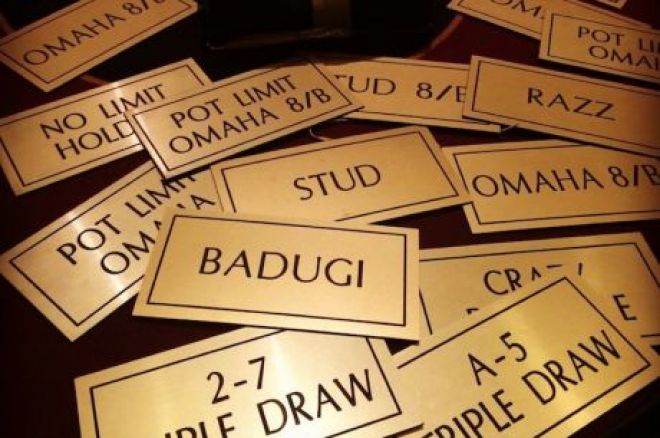
Image credit: PokerNews.com
Even for those who prefer a dealer’s choice game, this is a good foundation upon which to build that. Because this is already a good mix, players who start a game could easily say that the game(s) they’d choose are already in this mix, or could add one or two additional ones.
But the point here is that this is a good, solid foundation for any mixed game. I would assert that this is much better than HORSE, which has the flaws of (a) including Texas Hold’em and (b) being stud-heavy. TORSE, which is seeing some popularity from mixed game players who simply don’t want to even sniff any two-card game, suffers from the latter issue.
A “perfect mixed game” optimally would include a good mix of games, and this suggested mix is that. That said, I’ve played in mixed games with more than 20 games in the mix. I’ve enjoyed playing those, but I’ve also seen players approach the table and turn away because they think that many games is “too much.” While I could argue that it is not, my suggested 14-game mix also addresses this reason for a potential new player to walk away from a particular game.
Game Procedures
Before going into the basics of each game, there are game procedures that mixed games typically follow, plus game type procedures. Note that some individual poker rooms might have rules that specifically deviate from these, but in general, following these will keep the understanding of how mixed games run consistently everywhere. Plus, many of these rules have to do with what happens when a deck runs out, which can happen when players receive more than 2 cards for a hand.
These are also adapted from a list compiled by Ron Ware, a Las Vegas-based mixed game player who posted a “Rules” document in a Facebook group for mixed game players.
- Games are 6-, 7-, or 8-handed. 7- or 8-handed may require a sit-out for 5-card draw games. 8-handed may require a sit-out for all games. Sit out is the player in front of the blinds.
- In any stud hi/lo game, bring in is the high up card.
- Players agree on hands per game. If fewer than the number of active players, dealer should track hands dealt with lammers or similar. If the same as the number of active players, dealer button starts in seat 1, and game changes when button returns to seat 1. Button moves, but is not used, in stud games.
- Reshuffles during draw games include muck and burn cards, but not discards from current draw. Dealer always burns after a reshuffle.
- If a final draw or 7th street or river card can be completed with the last card and just the burn cards, dealer scrambles the last card and burn cards together and then dealt.
Basic Mixed Game Poker Strategies
This section explains the basic rules about how to play each game in the 14-game mix, and then provides some basic cash game strategy for each. Note that many of these games have variants. In general, I suggest the basic variant to start, but hey, it’s a mixed game, so feel free to, uh, mix it up.
First, let’s look at basic strategies for each game type.
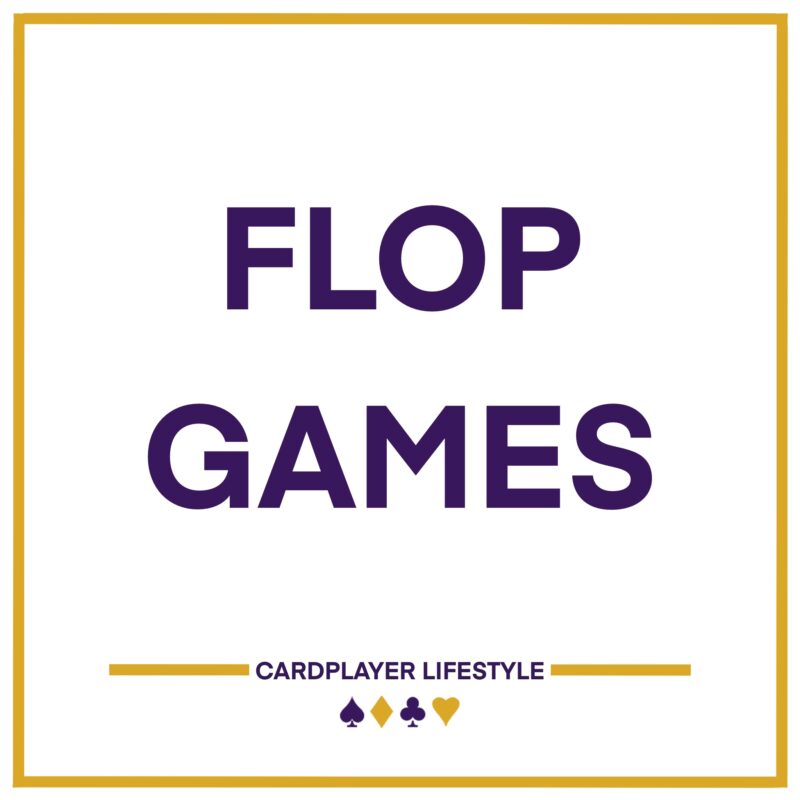
Flop Game Strategies
Of course, the king of this game type is Texas Hold ‘em, but also of course, we don’t want this game anywhere near a mix. Still, hold ‘em-type strategies are the foundation upon which the basic strategies for flop games are built.
Even though you are dealt more than 2 cards in mixed games, flop/community card games still use only exactly 2 hole cards to make a complete poker hand. The basic rule is to make sure you have a hand where every card has a potential use (i.e., no “danglers,” in the parlance). In split-pot games, hands that have good scoop potential are typically the ones you’ll start playing aggressively. Then the board, the number of boards, and the number of remaining players will largely determine your future course.
For more information about strategies in flop/community card games, see Mixed Games Poker Guide: Flop Games
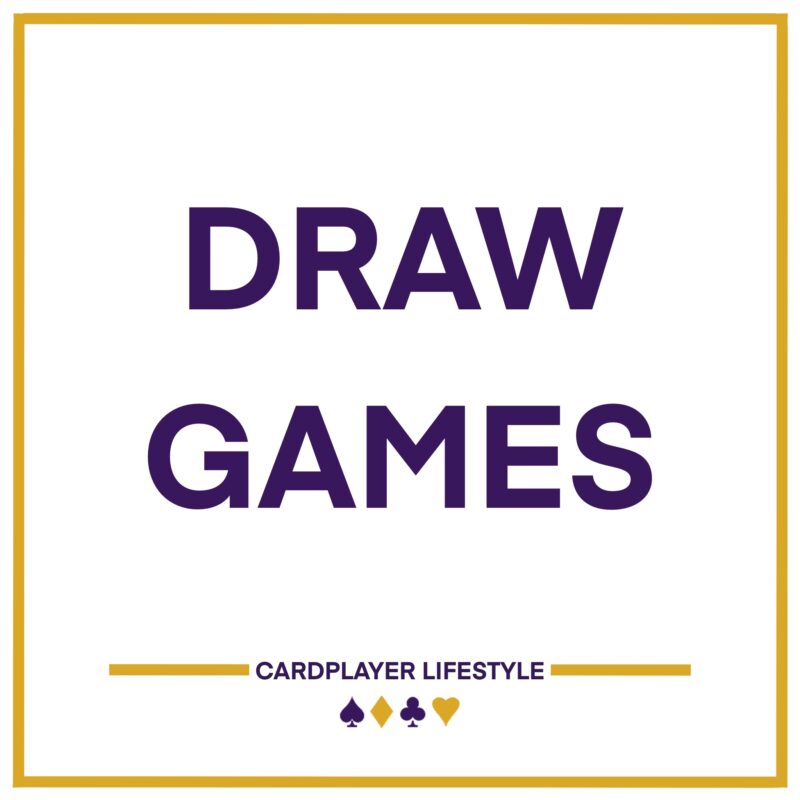
Draw Game Strategies
With no exposed cards (except games with a single community, or “spit,” card), draw games can have great bluff potential. But because most draw games in mixed games have 3 draws, getting players to fold can be significantly more difficult than in single-draw games (which are not typically played fixed limit).
With a good 5-card or 4-card hand, you’re typically ramming and jamming. Decent 3-card hands are ones you can be aggressive with if you’re the initial raiser, or can sometimes cold-call, or even 3-bet, if one of the top 3-card hands. 2-card hands and worse should be mucked, with very few exceptions. In general, if you do not improve on the first draw, especially if there is significant action, especially by hands that started better than you, folding is the preferable option.
For more information about strategies in draw games, see Mixed Games Poker Guide: Draw Games

Stud Game Strategies
Stud game strategies tend to be the opposite of draw game strategies because most of all opponents’ hands are exposed. But so are yours.
Most any good 3 cards should be played aggressively. Your aim is to limit the number of your opponents to as few as possible. You must be aware of two things: up cards that have been folded, and the best possible hand your opponents can make considering their up cards. Folded cards that you need to make a hand significantly affect your odds of making your hand. The same holds true for your opponents. In many stud games, aces – especially suited aces – make for a good start, although weakened if your third card cannot connect.
For more information about strategies in stud games, see Mixed Games Poker Guide: Stud Games

Drawmaha Game Strategies
Drawmaha games aren’t just split-pot games, they include two game types: draw + Omaha. And you only get one draw.
In general, play for the draw hand (your 5 hole cards), and then try to back your way into a good Omaha hand to scoop. With that in mind, you rarely want to be drawing 2 cards because the chance of making a good hole-card hand is relatively slim.
How to Play Each Game, and Basic Game Strategy
2-7 Triple Draw
RULES: Triple draw game. 5 lowest ranking cards possible, without making a straight or a flush. Aces are high. The best possible hand is 75432. There is no qualifier.
STRATEGY: You rarely want to enter a pot without holding a 2. Sometimes a 7. Having both significantly increases your potential. A 6 is often a hand killer, in part because it allows you to make a potential straight. Typically raise 4- and 5-card made 7- 8- and sometimes 9-low hands. Often raise 3 cards 7 or lower. It’s generally a leak to call raises with just 2 cards 7 or lower; an exception might be 23 or 27 for one additional bet. If you draw 2 on the first draw, don’t improve, and face serious aggression, unless you have 3 non-straightening cards lower than a 7, lean toward folding.
Omaha/8
RULES: Regular Omaha (4 cards to each player, must use two in your hand and three on the board). The pot is split between the best high and the best low hand. (5432A is the best possible low). There is an 8 or better qualifier for the low.
STRATEGY: Aces are your friend, especially when suited. Look for scoop hands, which typically contain suited aces with a 2. Suited aces with a 2 (and sometimes 3), A2 with connecting cards (either high or low), and A23 hands are prime raising hands. Double pairs can be as well. If you have just a nut low hand and there is significant action, you might be playing for ¼, or even ⅙ of the pot, which means you may be losing money with each bet you put in. If you’re not sure what you have, just turn your hand up at the end (i.e., “cards talk”).
Razz
RULES: 7 Card stud, played for low only. Best hand is 5432A. Straights and flushes do not count against the low. There is no qualifier. High card bring in.
STRATEGY: Stud games are all about up cards and memory. A 6 low is an excellent hand, a 7-low is a very good hand, and an 8-low is generally a string hand. If you start with any of these, raising is generally the approach, especially if a lower card is your up card. If you see duplicates of the rank you hold folded, your hand is stronger, but if you see cards you need folded in other hands, you have fewer outs. Bluffing opportunities often appear on 5th street when the bet doubles, you draw well, and opponents brick.
Drawmaha
RULES: Combines 5-card single draw and Omaha high. Best 5-card poker hand and best Omaha high hand using exactly 2 cards from your hand + exactly 3 cards from the board split the pot.
STRATEGY: Look for good 5-card hands, and then consider what you can do for Omaha. Playing for just the Omaha side means you’re typically playing for just half the pot, which is a sub-optimal strategy. Because this is Omaha high, hands with lots of high cards play well, and of course, having an ace is optimal. Dealt single pair hands are middling strength, especially when you consider if you do draw 3, your hand plays pretty face up. A dealt 2-pair hand is strong, and dealt trips or better is the road to rammin’ jammin’. (But, of course, trips reduces your chance at a good Omaha hand.) Otherwise, look for 5-card hands where you have to draw one, and fold otherwise. If you don’t improve and don’t pick up a good Omaha hand, you’re best bet is to slow down. Of course, if you were drawing 1, didn’t make it, and missed the flop, you’re folding.
A-5 Triple Draw
RULES: Triple draw game. 5 lowest ranking cards possible. Aces are low. The best possible hand is 5432A. There is no qualifier.
STRATEGY: For those used to playing 2-7 triple draw, the good hands in that game will deceive them into thinking they are good hands in this game. But while a 7-low is a rammin’ jammin’ hand in 2-7, it’s marginal in A-5, especially if it is a rough 7. In general, look for at least 3 cards 6 or lower, and if first in the pot, raise. One-card 6 draws are extremely strong, and one-card 7 draws are as well, especially if it is a smooth hand. Rarely draw 3 cards unless your two cards are A2, A3, A4, and A5. As with 2-7 triple draw, if you draw 2 or more, do not improve, and your opponents are drawing fewer and are aggressive, lean toward folding.
Double-Board Omaha
RULES: Omaha high with two complete boards. The best high hand on each board gets half the pot. This is also played high-low (i.e., “best-best”), where the best overall high and the best overall low split the pot.
STRATEGY: This is straight-up Omaha strategy, only twice. If it’s played high-only, you’re looking for 4 cards that make good high hands. If it’s played high-low, you’re looking for your typical O/8 hands, suited aces, A2xx, etc., with no danglers.
Stud/8
RULES: Standard, but be advised that many mixed games play this “super”. This means that you’ll receive either 3 or 4 hole cards from which you must select 2 (you discard the others) before the initial betting round, after which fourth street is dealt. Afterward, it’s just 7 Card Stud with the best low hand getting half the pot. There is an 8 or better qualifier for the low.
STRATEGY: Typical stud/8 strategy except you have a bit of additional knowledge: the 2 cards you threw away. So these, as well as any folded up cards by your opponents, will not be available to you. Because everyone is getting 4 face down cards, starting hands are likely to be stronger for anyone choosing to play the hand. Anything rolled up is a monster to start. Aces, especially suited, with 2 other low cards are also very strong.
Badugi
RULES: Triple draw game. Each player is dealt 4 cards. Must make lowest possible hand, of 4 different suits, with no pairs (a.k.a., a “Badugi”). If you have a pair or two of the same suit, you do not have a 4-card hand. If no Badugi is made, then the best 3-card low wins. The best possible hand is 432A “rainbow”.
STRATEGY: A dealt 4-suited hand is strong, and should be pushed until you meet resistance. For example, you are dealt KJ62 rainbow, you raise, and get 3 callers. One opponent draws 1 twice, then pats and bets out. You should probably fold. Otherwise, generally look for 3-card hands 8 or better and 2-card hands A4 or better. The latter can call 2 raises, but if it does not improve, should generally be folded.
It’s HARD to make a good badugi, even when drawing one card; to make a good badugi, an 8 or 7 at least, is around a 4-out draw. Also, pay attention to the rank and suit of cards you discard.
Drawmaha A-5
RULES: Combines 5-card single draw and Omaha high. Best 5-card A-5 poker hand and best Omaha high hand using exactly 2 cards from your hand and exactly 3 cards from the board split the pot.
STRATEGY: Similar to Drawmaha, except that you’re looking for a good A-5 low 5-card hand. Because there is just one draw, you are generally looking for a made or decent 1-card draw. 2-card draws rarely succeed. A made J or 10 can often be good unless there are multiple 1-card draws against you. Otherwise, look for 4 cards 9 or 8 or better. As such, recognize that a flop of low cards is often going to hit everyone staying in. Rarely do you want to be entering pots without an A unless all of your remaining cards work well together. If the flop is all high cards, you’re almost certainly playing for just half the pot.
Archie
RULES: Triple draw game played high/low with qualifiers for both. Low is 5 lowest ranking cards possible. The best possible low hand is 5432A, with a royal flush being the best high hand. Qualifiers are typically 8-low or better for low, and a pair of 9s or better for high.
STRATEGY: Because triple draw games are typically played to make some sort of low hand, adding a high hand to a triple draw game adds variety. And because a player can go high or low, more players are likely to be inclined to play. Many times, you’re looking to make a high-only or low-only hand, and typically, you’ll want at least 3 of your intended hand to start, although a single higher pair may be sufficient to go for a high hand. Scoop hands are necessarily all low (e.g., a low straight). Three or four low connected or suited cards make for a powerful starting hand. High pairs and A2 and A3 hands are probably the only draw-3 hands to start with, unless it’s 3 bets to go, and then these are also probably trash.
Razzdugi
RULES: 7 Card stud, played for low only. Best low hand splits with best badugi hand. Best low hand is 5432A. Best badugi hand is 432A rainbow. Straights and flushes do not count against the low. There is no qualifier. High card bring in.
STRATEGY: Similar to razz, except if your runout is one- or two-suited, you’re playing for just half the pot. Getting dealt 3 cards of different suits is a strong starting hand, no matter the ranks of the cards.
Drawmaha 49/Drawmaha 0
RULES: Combines 5-card single draw and Omaha high. Best 5-card hand and best Omaha high hand using exactly 2 cards from your hand and exactly 3 cards from the board split the pot. The 5-card hand is made not by poker hand ranks, but by counting card pips. That is, A is 1, deuce is 2, trey is 3, etc., and face cards are zero. You evaluate your 5-card hand by counting the total of pips on all 5 cards. For 49, the nuts is TTTT9. For 0, the nuts is any 5 face cards, kings, queens, or jacks.
STRATEGY: Like with other Drawmaha games, you play for the 5-card hand and hope to also hit an Omaha high hand. If you’re playing 49, you’re looking for tens, nines, and eights. Sevens are OK, sixes are iffy. You probably feel comfortable with a pip count in the low to mid 30s. If you’re playing 0, you’re looking for face cards and aces, and deuces and treys won’t hurt you too badly. Anything less than a 6 or 7 can be pretty strong. Drawing two is not quite so bad if you have three strong cards. For example, if you have two face cards and an ace, the chances are decent that you’ll pick up another face card.
Badeucey
RULES: Split-pot game, played as 2-7 triple draw, with a badugi getting half the pot. Aces are high in both halves. The best possible hand is 2345 (rainbow) with a 7, and an almost guaranteed scoop (winning the entire pot).
STRATEGY: Basic strategy is to play similarly to plain 2-7. A strong 2-7 will usually get half the pot. Never break a 7 or an 8 to chase a badugi. Starting with 3 low cards of different suits is VERY strong and should be raised and reraised. If you do not have a badugi draw, favor slightly stronger 2-7 hands because you’re playing for just half the pot.
3-2-1 Omaha
RULES: Omaha High. There are three flops, two turns, and one river. Players may use any combination of only one of the flops, only one of the turns, and the river to make the best hand. This is NOT a split pot game, there is only one winner. This game is sometimes played where each turn card can play only with its “connected” flops. That is, the top turn card plays only with the top and middle flop and the bottom turn card plays only with the middle and bottom flops.
STRATEGY: With 3 flops, many hands are worth a single bet, except rainbow hands. But with 3 flops and 2 turns, very strong hands are very likely. Any pair makes a full house likely, and underfulls are vulnerable (and made straights and flushes should generally be folded). On every street, identify the nut hand, and if you do not have it, proceed cautiously. Turns cards and the river have outsized impact because they work with so many more cards.



